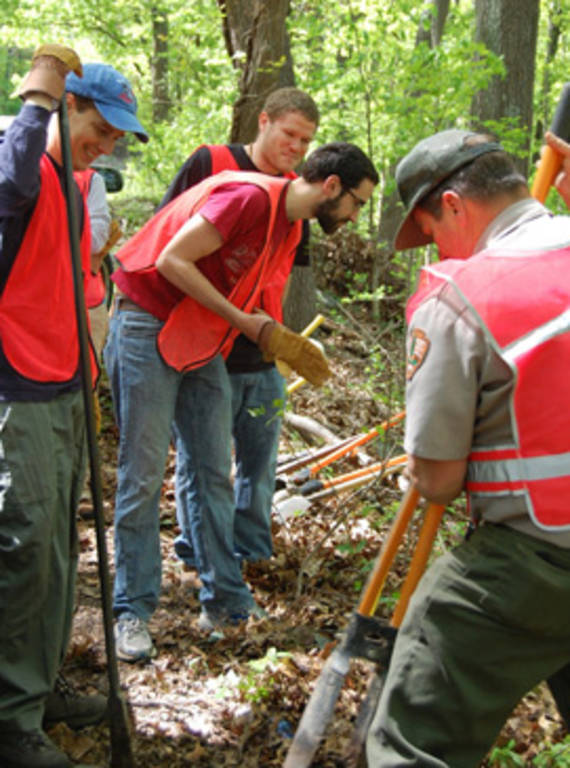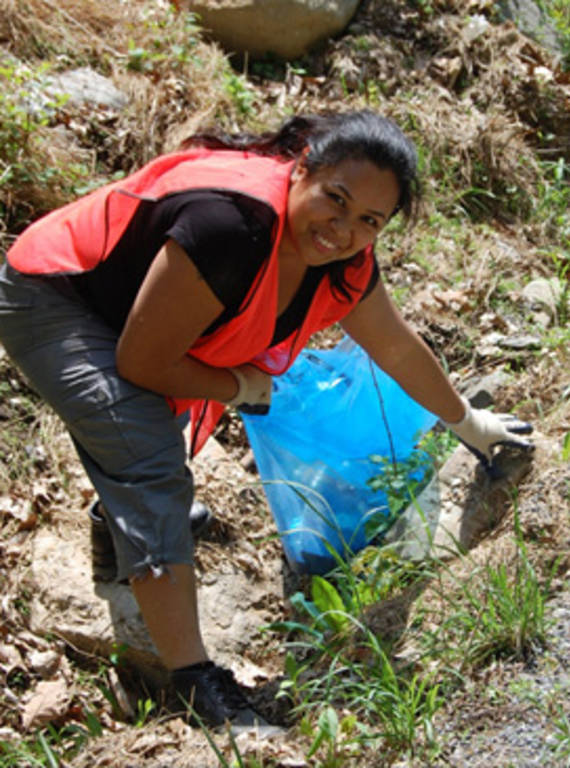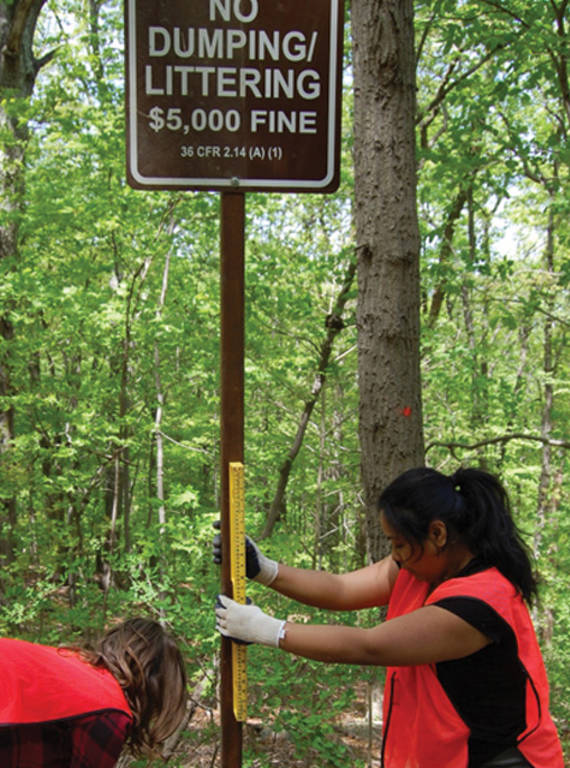Many people seem surprised when they find out that, as an NPCA employee, a typical day on the job does not include hiking around in the parks we work so hard to protect.

NPS Landscape Architect Steve Lowe shows NPCA volunteers how to use a post hole digger.
Photo © Madeleine Starkey/NPCALike many of my coworkers, I spend 99 percent of my time at work behind a desk. Fortunately, a group of NPCA employees recognized the irony of this situation and the need for staff like me to have hands-on time in the parks once in a while.
At NPCA, our work to protect national parks is guided by six core values: commitment to mission, empowerment, teamwork, accountability, innovation, and diversity. NPCA’s Core Values Team inspires staff to live and demonstrate these principles, creating a workplace of excellence that enables us to achieve our mission. When the team announced a new project earlier last year that supports these values, I was ecstatic! Going forward, each staff person may now take two paid days off work to participate in an approved National Park Service (NPS) volunteer project.

Khris Kantor helps to fill one of many bags with litter.
Photo © Madeleine Starkey/NPCAFor the first NPCA volunteer project last fall, a group of NPCA staff built a historic fence in the lower town of Harpers Ferry National Historical Park. The project was so popular, the team looked for more opportunities to put employees to work in the parks, including a new chance to help out at Harpers Ferry.
This past May, 16 NPCA staff members met at a shuttle bus stop in the lower town on a beautiful Friday morning. Sam Zurbuch, NPS volunteer coordinator, and Steve Lowe, NPS landscape architect, briefed the group on our project. Our mission: install “no dumping” and NPS boundary signs to help address a multi-generational dumping problem on park land. By publicly posting these signs, Park Service personnel can officially reprimand people for breaking the law within the park, allowing rangers to effectively address the long-standing problem. After the project brief, our group headed out on a quick two-mile hike up the Appalachian Trail to the worksite along Chestnut Hill Road.

Volunteers make sure the signs are level.
Photo © Madeleine Starkey/NPCAOnce on site, Steve gave an overview on how to safely use the tools while demonstrating the day’s objectives, which included digging post holes, setting the signs in concrete, hanging NPS boundary signs along the road, and picking up trash. Alan led the trash brigade, personally hauling more than 25 tires out of the woods; Ben, Katie, and Michele worked hard to nail boundary signs at precise intervals along the park border; and the rest of us split into smaller groups to install the “no dumping” signs.
At the end of the day we installed 32 signs, collected more than 30 bags of trash (we would have collected even more but we ran out of bags), and pulled 27 tires, a mattress, and a recliner out of the woods, for a total of almost $2,000 worth of labor for the Park Service. Not only did we accomplish our goals, but we victoriously battled rocks, poison ivy, broken glass, and a few deer carcasses to do it.
This volunteer project helped Harpers Ferry National Historic Park and the National Park Service immensely, but it helped NPCA, too. These types of experiences bring people together, and they remind us why we do our “desk” jobs every day.
About the author
-
 Madeleine Starkey Director, Executive
Madeleine Starkey Director, ExecutiveMadeleine Starkey is the Senior Executive Assistant to NPCA's President and CEO.